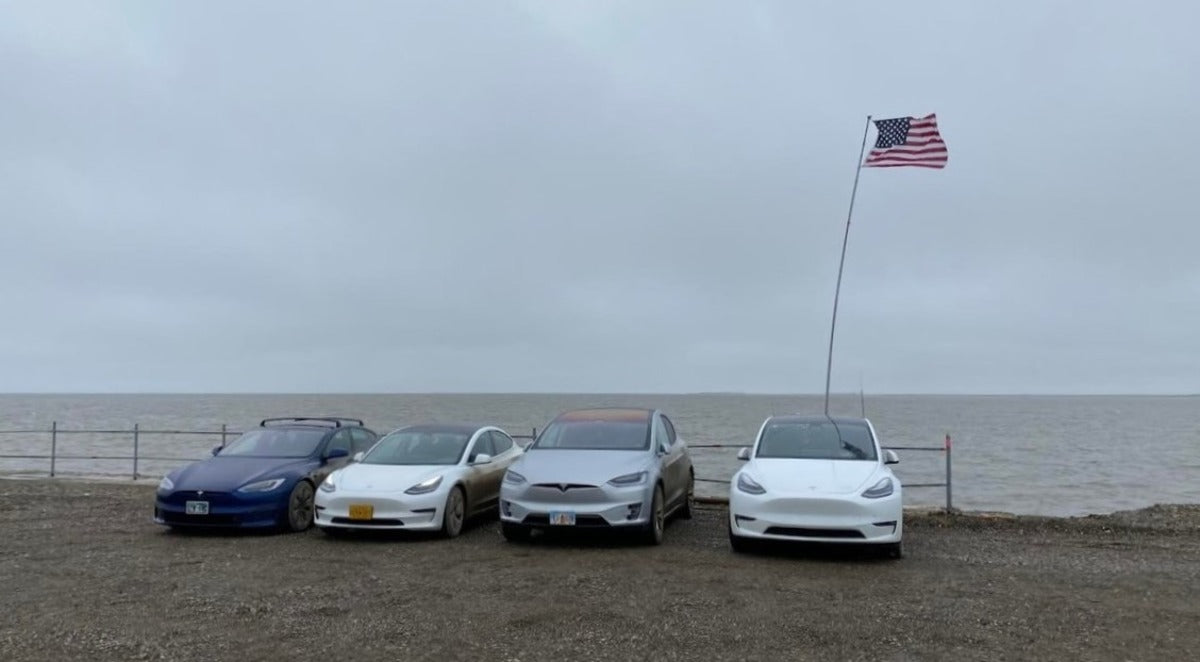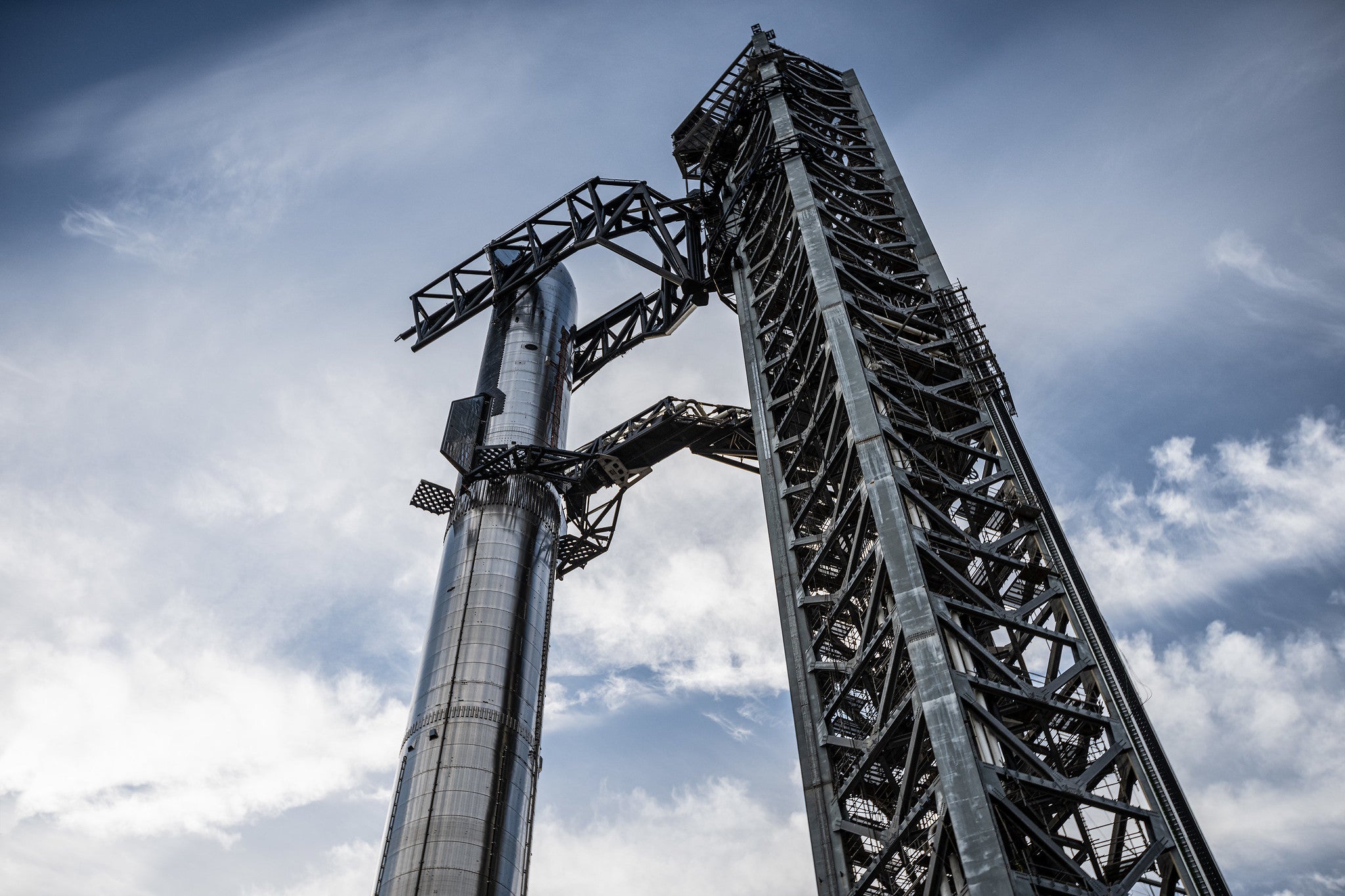Photos source: @AndreiBulu/Twitter
Electric vehicles Tesla Model S, 3, X, Y, along with Rivian, Ford F150 Lightning, and Hummer EV, demonstrated themselves in the Alaska rally, showing that neither cold nor off-road can diminish driving pleasure. The goal of this project is to demonstrate the feasibility of using electric vehicles in a remote, harsh environment with low infrastructure.
Owning an electric car is associated with many fears, which affect the speed of their adoption. Andrei (@AndreiBulu/Twitter) shared with Tesmanian the result of an Alaska rally featuring a Model X Long Range, a refreshed Model S Long Range, two Model Y Long Range cars, a Model 3 Long Range, three Rivians, a Ford F150 Lightning, and a Hummer EV. The rally was part of the “Electrifying the Last Freeway” project, which was initiated by a group of Alaskan EV enthusiasts from ELFalaska.com and the Alaska Electric Vehicle Association with support from the Department of Energy (DOE) and Department of Transportation (DOT).
The goal of this project is to demonstrate the feasibility of using electric vehicles in a remote, harsh environment with low infrastructure. In addition, the group continuously recorded the energy consumption of the vehicles in such conditions (gravel roads, steep inclines, etc.).
“The AKEVA initiative – Electrifying the Last Freeway – provides critical support for the 2022 Arctic Road Rally, giving volunteer drivers the unique opportunity to travel the Dalton Highway to the Arctic Ocean for the first time ever in an electric vehicle,” the group said. The cars left on August 12 from Prudhoe and were due back in Fairbanks at Golden Valley Electric Association by August 16. The trip was 1,096 miles long.
Andrei said that the Dalton Highway was built as an access road to support the Trans-Alaska Pipeline System in 1974. The road itself is mostly gravel, in some places very primitive, which increases the level of its danger. The nearest medical facilities are in Fairbanks and Deadhorse, so anyone traveling on the Dalton Highway is advised to bring their own survival gear.
Because the location is so remote, telephone service is not available, so all participants had Garmin Inreach tracking devices, satellite phones, and some HAM equipment. The vehicles were rigged with telematics equipment (GPS + ODB connection). The data collected will be shared with the Department of Energy, which will evaluate the feasibility of installing a permanent fast-charging infrastructure in harsh remote locations.
Andrei said that most driving adventures end in Deadhorse, but with the support of ConocoPhillips, the group received permission to drive another 50 miles through oil fields, all the way to the Arctic Ocean, Cape Oliktok, which is the northernmost point in North America.

To get from Fairbanks to Deadhorse in just two days, the group needed a temporary fast-charging corridor that was set up for them. Several ABB fast chargers (50kW, CHADEMO and CCS) were installed at DOT (roadside maintenance sites) as well as several oil pump stations. In order to allow all vehicles to charge in turn, without senseless delays, the column was divided. The most efficient cars, the Tesla Model S, Model 3, Model X, and Model Ys, drove first, followed by the trucks, Rivians, Ford F150, and Hummer.
Due to higher power consumption and limited charging time, Rivians always made it to charge stations with a small percentage of charge, which was only enough for a few miles. Model S and Hummer-EV held their charge very well and could even miss some stops for charging. Preliminary data showed that driving at an average speed of 40 mph on gravel roads is roughly equivalent to driving at 70-75 mph on highways.
Andrei said that all 10 electric vehicles reached the Arctic Ocean without serious incidents, which should dispel the range anxiety myth. Of course, in such a situation, “good planning with multiple fallback plans is the key to making it to the destination,” he stressed.
Alaskan paint job. 😀 #daltonHWY @AllThingsTSLA @DirtyTesLa pic.twitter.com/ubNhpzCLTu
— ☮️ CYBER-DX (@AndreiBulu) August 13, 2022
We made it to the northen most drivable road in United States, Olitok Point, Alaska! #ELFalaska, #DOE #DOT @elonmusk @28delayslater pic.twitter.com/iKnbNi1upR
— ☮️ CYBER-DX (@AndreiBulu) August 14, 2022
As a result of the rally, several tires went flat due to the road surface strewn with sharp stones, and in addition, two windshields were cracked from the impact of stones that escaped from under the wheels of oncoming trucks. At the same time, not a single car had a transmission problem, and thanks to excellent planning and preparation, not a single car ran out of power. All Tesla vehicles arrived at the charging points with a battery charge of about 20%.
Andrei, who drove the Model Y, as well as other Tesla rally drivers, said that despite spending up to 16 hours a day in the car, the journey was not tiring for them. The guys attributed this to the excellent lumbar support in Tesla's seats.
© 2022, Eva Fox | Tesmanian. All rights reserved.
_____________________________
We appreciate your readership! Please share your thoughts in the comment section below.
Article edited by @SmokeyShorts; follow him on Twitter








